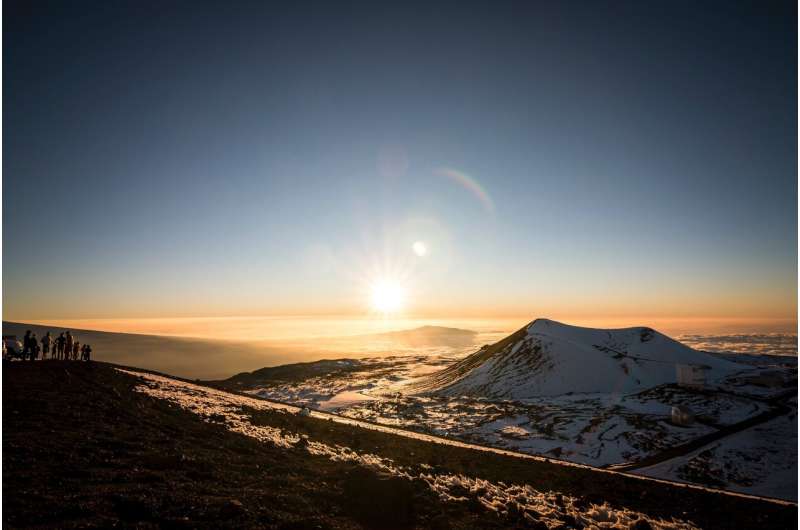Credit: Steve Halama
A team of researchers from the U.S. Geological Survey and the University of Oregon has found evidence that Mauna Kea has experienced over 1 million deep, long-period earthquakes (DLPs) over the past 19 years. In their paper published in the journal Science, the group describes their study of the long-dormant volcano on Hawaii's Big Island, and what they learned about it. Robin Matoza with the University of California, Santa Barbara, has published a Perspective piece on the work by the team in the same journal issue.
Mauna Kea is classified as a dormant shield volcano—it is situated on the Big Island of Hawaii, rising to a height of 14,000 feet. It has been in the news of late as native Hawaiians protest plans to build a very large telescope near its summit—the volcano has not erupted for 4,500 years, leading some in the field to consider it dead.
But the volcano is not completely dead—the researchers with this new effort have discovered that deep beneath its peak, the volcano has been producing DLPs at a regular pace for a very long time—at least 19 years. The researchers discovered the regular eruptions by accident—they were testing an algorithm they had developed for monitoring earthquakes when they decided to test it on Mauna Kea. When they used seismic data from the volcano, the algorithm revealed that the volcano has been generating DLPs every seven to 12 minutes (at a depth of approximately 25 kilometers) since at least 1999. That adds up to over 1 million DLPs over the past two decades.
The researchers note that until recently, DLPs emanating from volcanoes were reason for alarm, as they have often been precursors to eruptions. But with Mauna Kea, the seismic data pointed to something else—gas burbling up from pools of slowly cooling magma, leading to pressure buildup that eventually fractures the rock around it, producing small earthquakes—most of which are no more than magnitude 1.5. They conclude by suggesting that DLP activity under other volcanoes is likely underreported and more common than previously believed, and are thus not a reason for alarm.
More information: Aaron G. Wech et al. Deep long-period earthquakes generated by second boiling beneath Mauna Kea volcano, Science (2020). DOI: 10.1126/science.aba4798
Journal information: Science
© 2020 Science X Network























